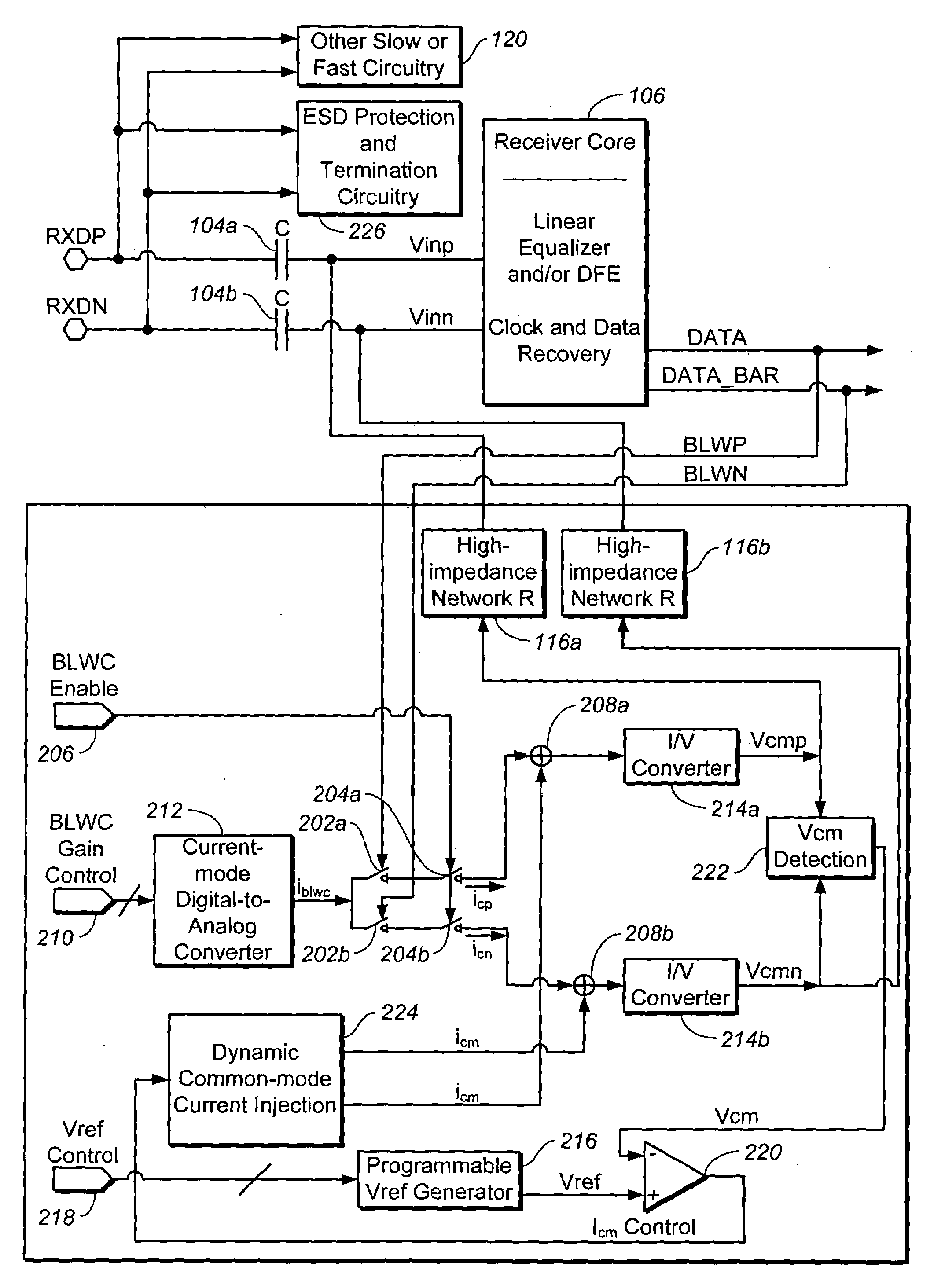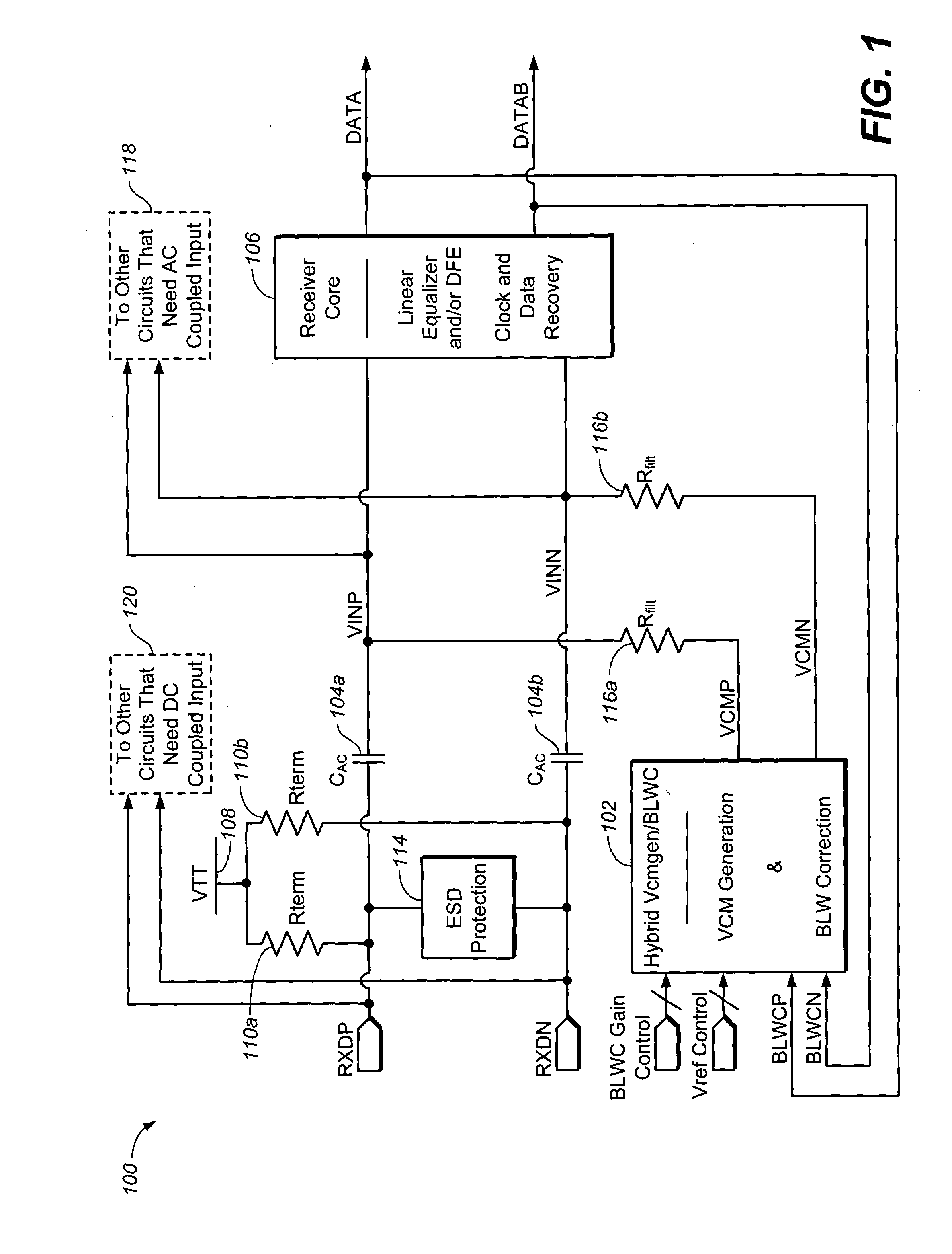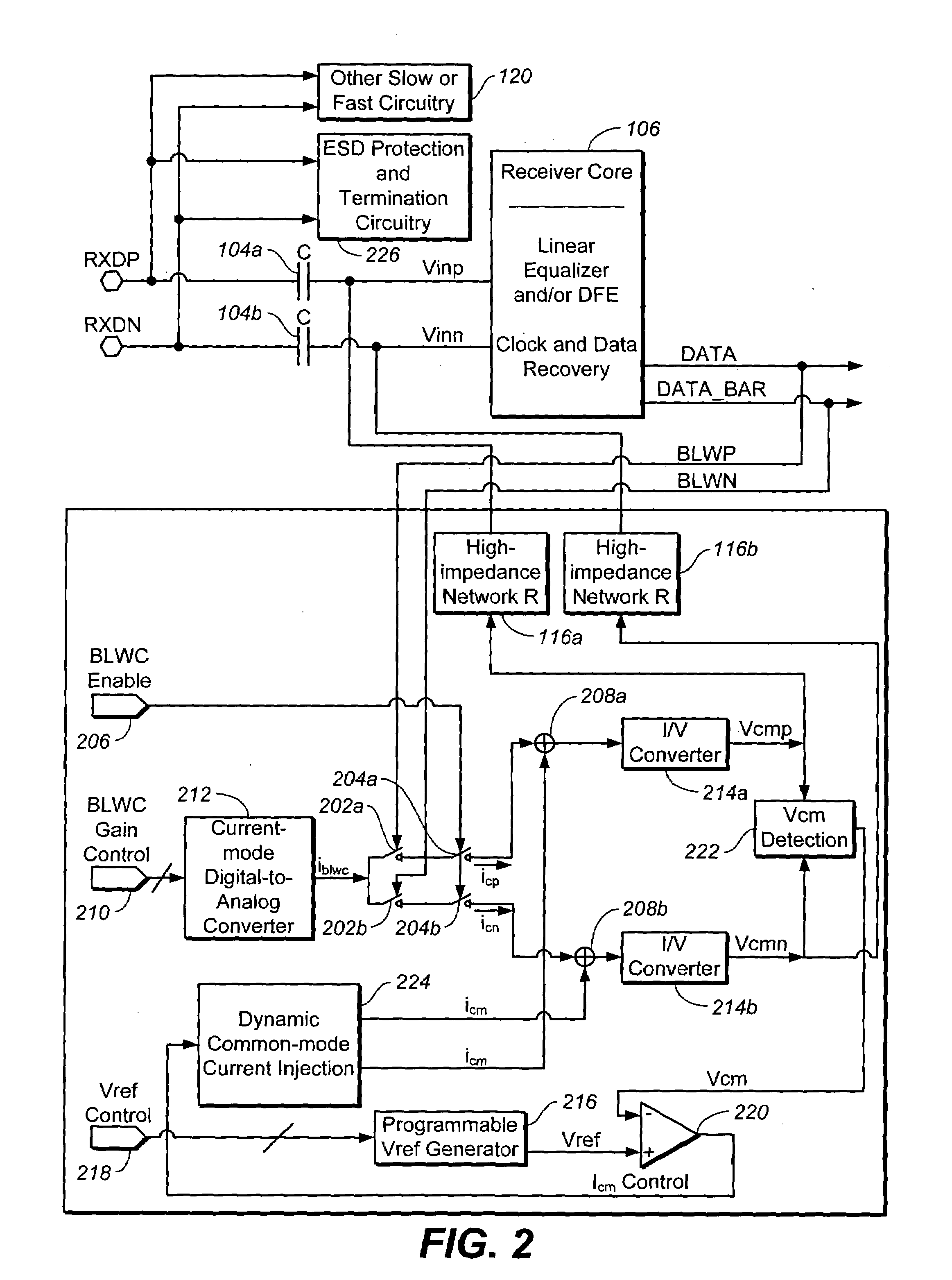AC coupling circuit integrated with receiver with hybrid stable common-mode voltage generation and baseline-wander compensation
a high-speed receiver and ac coupling technology, applied in pulse technique, dc level restoring means or bias distortion correction, baseband system details, etc., can solve the problems of low frequency content errors, baseline wander (blw), and sensitive high-speed data contamination, so as to minimize noise and interference, the effect of minimizing the optimization of circuits
- Summary
- Abstract
- Description
- Claims
- Application Information
AI Technical Summary
Benefits of technology
Problems solved by technology
Method used
Image
Examples
Embodiment Construction
[0026]With reference now to FIG. 1, there is shown a block diagram depicting a receiver 100, provided with a circuit 102 comprising an embodiment of the invention. Receiver 100 usefully comprises the receiver in a high speed backplane transceiver, such as a transceiver operating at 6 Gbps or greater, but the invention is not limited thereto. Moreover, all components of receiver 100 including circuit 102 are usefully integrated together on a single chip or IC. As a further feature, the input signal to the receiver, coupled from the transmitter through a transmission channel, usefully comprises a differential input having positive and negative analog voltage components, RXDP and RXDN, respectively, and a common-mode voltage. The input signal is equal to (RXDP−RXDN), and the common-mode voltage associated with the components is (RXDP+RXDN) / 2.
[0027]Referring further to FIG. 1, there is shown the receiver input signals RXDP / RXDN coupled to an input buffer 106 through capacitors 104a and ...
PUM
 Login to View More
Login to View More Abstract
Description
Claims
Application Information
 Login to View More
Login to View More - R&D
- Intellectual Property
- Life Sciences
- Materials
- Tech Scout
- Unparalleled Data Quality
- Higher Quality Content
- 60% Fewer Hallucinations
Browse by: Latest US Patents, China's latest patents, Technical Efficacy Thesaurus, Application Domain, Technology Topic, Popular Technical Reports.
© 2025 PatSnap. All rights reserved.Legal|Privacy policy|Modern Slavery Act Transparency Statement|Sitemap|About US| Contact US: help@patsnap.com



